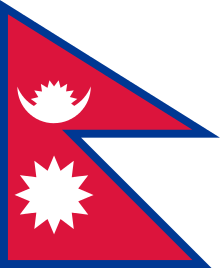Empress Kōjun
| Empress Kōjun 香淳皇后 | |||||
|---|---|---|---|---|---|
 | |||||
| Empress consort of Japan | |||||
| Tenure |
25 December 1926 – 7 January 1989 | ||||
| Enthronement | 10 November 1928 | ||||
| Born |
6 March 1903 Tokyo, Japan | ||||
| Died |
16 June 2000 (aged 97) Fukiage Ōmiya Palace, Tokyo, Japan | ||||
| Burial |
25 July 2000 Musashi Imperial Graveyard, Hachiōji, Tokyo, Japan | ||||
| Spouse | Emperor Shōwa | ||||
| Issue |
Shigeko, Princess Teru Sachiko, Princess Hisa Kazuko, Princess Taka Atsuko, Princess Yori Akihito, Emperor of Japan Masahito, Prince Hitachi Takako, Princess Suga | ||||
| |||||
| House | Imperial House of Japan | ||||
| Father | Prince Kuniyoshi Kuni | ||||
| Mother | Chikako Shimazui | ||||
| Religion | Shinto | ||||
Empress Kōjun (香淳皇后 Kōjun-kōgō), born Princess Nagako (良子女王 Nagako Joō, 6 March 1903 – 16 June 2000), was empress consort of Emperor Shōwa of Japan. She was the mother of the present emperor, Akihito.
Her posthumous name is Kōjun,[1] which means "fragrant purity". Empress Kōjun was empress consort (kōgō) from 25 December 1926 to 7 January 1989, making her the longest lived empress consort in Japanese history.[2]
Early life

Princess Nagako was born in Tokyo, Japan, into one of the Ōke branches of the Imperial House of Japan, which are eligible to provide an heir to the throne of Japan (by adoption). She was therefore a Princess by birth, as the daughter of Kuniyoshi, Prince Kuni (1873–1929) by his consort, Chikako (1879–1956). While her father was a scion of the Imperial family itself, her mother descended from daimyo, the feudal or military aristocracy.[3] Nagako would become one of the last Japanese who could remember what life was like inside the Japanese aristocracy in the years before the Second World War.[4]
As a young girl, Nagako attended the Girls' Department of Peers' School in Tokyo (now Gakushuin), which was a school set up especially for the daughters of the aristocracy and imperial family. Among her cohort was Crown Princess Bangja of Korea (then known as Princess Masako Nashimoto). Following her betrothal at age fourteen, Nagako was withdrawn from this school and began a six-year training program aimed at developing the accomplishments deemed necessary for an empress.[2]
Marriage and children
Nagako was betrothed to her distant (but agnatic) cousin, Prince Hirohito, at a very young age, in a match arranged by their parents, in the manner which was usual in Japanese society at that time. Her lineage and her father's unblemished military career were the major considerations. In January 1919, the engagement of Princess Nagako to her distant cousin, the then-Crown Prince Hirohito (later the Shōwa Emperor; 1901–1989), was announced. In a step away from tradition, Hirohito was allowed to choose his own bride. Nagako herself had no choice in the matter. At the age of 14, she and other eligible women participated in a tea ceremony at the Imperial Palace while the Crown Prince watched unseen from behind a screen.[2] He eventually selected Nagako.[5]

Princess Nagako married Crown Prince Hirohito on 26 January 1924 and became Crown Princess of Japan.[1] She became Empress upon Hirohito's accession to the throne on 25 December 1926. Unlike his royal predecessors, Emperor Hirohito decided to abandon his 39 court concubines. Over the first decade of marriage, Nagako produced only four daughters. It was only on December 23, 1933, almost ten years after their wedding, that the young couple had a son, and gave Japan an heir, in the birth of Akihito (明仁), the present emperor.[2] In all, Hirohito and Nagako had seven children, five daughters and two sons. (see Issue)
Life as empress


Empress Nagako performed her ceremonial duties in a traditional manner. She initially came to live in the palace during the time when people spoke an archaic imperial form of Japanese that has largely disappeared.[4] Her role required her to attend special ceremonies such as those for the 2600th anniversary of the legendary foundation of the Empire of Japan in 1940 or the conquest of Singapore in 1942.[6]
The Empress was the first Japanese Imperial Consort to travel abroad. She accompanied Emperor Hirohito on his European tour in 1971 and later on his state visit to the United States in 1975. She became known as the "smiling Empress".
After the Emperor's death on 7 January 1989, she assumed the title of Empress Dowager.[1] At that time, she was in failing health herself and did not attend her husband's funeral; and she remained in seclusion for the rest of her life. In 1995, she became the longest-living dowager empress of Japan, breaking the record of Empress Kanshi, who died 868 years prior.[2]
At the time of her death at the age of 97 in 2000, Nagako had been an empress for 74 years. In her final days, the Imperial Household Agency announced that she was suffering from breathing problems but that the illness was not serious. Nagako died the next day, with her family at her side.[4]
Emperor Akihito granted his mother the posthumous title of Empress Kōjun.[1] Her final resting place is in a mausoleum named Musashino no Higashi no Misasagi, near that of her husband within the Musashi Imperial Graveyard.[1]
Titles and styles
| Styles of Empress Kōjun | |
|---|---|
 | |
| Reference style | Her Imperial Majesty |
| Spoken style | Your Imperial Majesty |
| Alternative style | Ma'am |
gou_Flag.svg.png)
Across the arc of her life and death, Empress Kōjun has been known by number of related, but distinct titles:[1]
- 6 March 1903 – 26 January 1924: Her Imperial Highness Princess Nagako of Kuni
- 26 January 1924 – 25 December 1926: Her Imperial Highness The Crown Princess
- 25 December 1926 – 7 January 1989: Her Majesty The Empress
- 7 January 1989 – 16 June 2000: Her Majesty The Empress Dowager
- Posthumous name: Her Majesty Empress Kōjun
Honours
National honours
-
 Japan: Knight Grand Cordon of the Order of the Sacred Treasure[7][8]
Japan: Knight Grand Cordon of the Order of the Sacred Treasure[7][8] -
 Japan: Former Grand Mistress Paulownia Dame Grand Cordon of the Order of the Precious Crown[7][8]
Japan: Former Grand Mistress Paulownia Dame Grand Cordon of the Order of the Precious Crown[7][8]
Foreign honours
-
.svg.png) Belgium: Dame Grand Cross of the Order of Leopold[9][10]
Belgium: Dame Grand Cross of the Order of Leopold[9][10] -
 Denmark: Knight of the Order of the Elephant
Denmark: Knight of the Order of the Elephant -
 Germany: Grand Cross of the Order of Merit of the Federal Republic of Germany, Special Class
Germany: Grand Cross of the Order of Merit of the Federal Republic of Germany, Special Class -
 Nepal: Member Grand Cross of the Order of Ojaswi Rajanya[11]
Nepal: Member Grand Cross of the Order of Ojaswi Rajanya[11] -
 Spain: Dame Grand Cross of the Order of Isabella the Catholic[12]
Spain: Dame Grand Cross of the Order of Isabella the Catholic[12] -
 Sweden: Member Grand Cross of the Royal Order of the Seraphim
Sweden: Member Grand Cross of the Royal Order of the Seraphim -
 Thailand: Dame Grand Cordon with Chain of the Order of the Royal House of Chakri
Thailand: Dame Grand Cordon with Chain of the Order of the Royal House of Chakri -
 Tonga: Dame Grand Cross with Collar of the Order of the Crown of Tonga[13]
Tonga: Dame Grand Cross with Collar of the Order of the Crown of Tonga[13]
Issue

| Name | Birth | Marriage | Issue | |
|---|---|---|---|---|
| Shigeko, Princess Teru | 9 December 1925 died, 23 July 1961 | 10 October 1943 | Prince Morihiro Higashikuni | Prince Nobuhiko Higashikuni Princess Fumiko Higashikuni Naohiko Higashikuni Hidehiko Higashikuni Yūko Higashikuni |
| Sachiko, Princess Hisa | 10 September 1927 died, 8 March 1928 | |||
| Kazuko, Princess Taka | 30 September 1929 died, 28 May 1989 | 21 May 1950 | Toshimichi Takatsukasa | Naotake Takatsukasa (adopted) |
| Atsuko, Princess Yori | 7 March 1931 | 10 October 1952 | Takamasa Ikeda | |
| Akihito, Emperor of Japan | 23 December 1933 | 10 April 1959 | Michiko Shōda | Naruhito, Crown Prince of Japan Fumihito, Prince Akishino Sayako, Princess Nori |
| Masahito, Prince Hitachi | 28 November 1935 | 30 September 1964 | Hanako Tsugaru | |
| Takako, Princess Suga | 2 March 1939 | 3 March 1960 | Hisanga Shimazu | Yoshihisa Shimazu |
Ancestry
| Ancestors of Empress Kōjun | |||||||||||||||||||||||||||||||||||||||||||||||||||||||||||||||||||||||||||||||||||||||||||||||||||||||||||||||||||||||||||||||||||||||||||||||||||||||||||||||||||||||||||||||||||||||||||||||||||||||||||||||||||||||||||||||||||||||||||||||||||||||||||||||||||||||||||||||||||||||||||||||||||||||||||||||||||||||||||||||||||||||||||
|---|---|---|---|---|---|---|---|---|---|---|---|---|---|---|---|---|---|---|---|---|---|---|---|---|---|---|---|---|---|---|---|---|---|---|---|---|---|---|---|---|---|---|---|---|---|---|---|---|---|---|---|---|---|---|---|---|---|---|---|---|---|---|---|---|---|---|---|---|---|---|---|---|---|---|---|---|---|---|---|---|---|---|---|---|---|---|---|---|---|---|---|---|---|---|---|---|---|---|---|---|---|---|---|---|---|---|---|---|---|---|---|---|---|---|---|---|---|---|---|---|---|---|---|---|---|---|---|---|---|---|---|---|---|---|---|---|---|---|---|---|---|---|---|---|---|---|---|---|---|---|---|---|---|---|---|---|---|---|---|---|---|---|---|---|---|---|---|---|---|---|---|---|---|---|---|---|---|---|---|---|---|---|---|---|---|---|---|---|---|---|---|---|---|---|---|---|---|---|---|---|---|---|---|---|---|---|---|---|---|---|---|---|---|---|---|---|---|---|---|---|---|---|---|---|---|---|---|---|---|---|---|---|---|---|---|---|---|---|---|---|---|---|---|---|---|---|---|---|---|---|---|---|---|---|---|---|---|---|---|---|---|---|---|---|---|---|---|---|---|---|---|---|---|---|---|---|---|---|---|---|---|---|---|---|---|---|---|---|---|---|---|---|---|---|---|---|---|---|---|---|---|---|---|---|---|---|---|---|---|---|---|---|---|---|---|---|---|---|---|---|---|---|---|---|---|---|---|---|---|---|---|
| |||||||||||||||||||||||||||||||||||||||||||||||||||||||||||||||||||||||||||||||||||||||||||||||||||||||||||||||||||||||||||||||||||||||||||||||||||||||||||||||||||||||||||||||||||||||||||||||||||||||||||||||||||||||||||||||||||||||||||||||||||||||||||||||||||||||||||||||||||||||||||||||||||||||||||||||||||||||||||||||||||||||||||
See also
Notes
- 1 2 3 4 5 6 Imperial Household Agency: Empress Kōjun
- 1 2 3 4 5 Downer, Lesely. Obituary: "Nagako, Dowager Empress of Japan," The Guardian (London). 17 June 2000.
- ↑ Large, Stephen S. Emperor Hirohito and Shōwa Japan: Political Biography, pp. 25-26.
- 1 2 3 Kristof, Nicholas D. "Dowager Empress Nagako, Hirohito's Widow, Dies at 97," New York Times. 17 June 2000.
- ↑ Connors, Leslie. (1987). The Emperor's Adviser: Saionji Kinmochi and Pre-war Japanese Politics, pp. 79-80.
- ↑ David C. Earhart, Certain Victory, 2008, pp.22, 23, 65
- 1 2 , Khojun wearing the stars of both orders
- 1 2 , Khojun wearing the stars of both orders
- ↑ https://s-media-cache-ak0.pinimg.com/736x/4e/6e/65/4e6e658dc46e7aaf150108bb825e270c.jpg
- ↑ http://belgiumjapan150.jp/assets/img/timeline/40-salle-de-banquet.jpg
- ↑ Omsa.org
- ↑ Boletín Oficial del Estado
- ↑ wearing the order badge attached to a ribbon on the left above her belt
References
- Connors, Leslie. (1987). The Emperor's Adviser: Saionji Kinmochi and Pre-war Japanese Politics. London: Routledge. ISBN 978-0-7099-3449-3
- Koyama, Itoko. (1958). Nagako, Empress of Japan (translation of Kogo sama). New York: J. Day Co. OCLC 1251689
- Large, Stephen S. (1992). Emperor Hirohito and Shōwa Japan: Political Biography. London: Routledge. ISBN 978-0-415-03203-2
External links
![]() Media related to Empress Kōjun at Wikimedia Commons
Media related to Empress Kōjun at Wikimedia Commons
- Kunaicho | Emperor Shōwa and Empress Kōjun
- BBC News: Japan mourns Empress Nagako
- BBC News: In pictures: Japan's imperial funeral
- Chicago Tribune: photo of Empress Nagako at White House during State Visit in 1975
| Japanese royalty | ||
|---|---|---|
| Preceded by Empress Teimei |
Empress consort of Japan 1926–1989 |
Succeeded by Empress Michiko (current) |
| Preceded by Empress Teimei |
Empress Dowager of Japan 1989–2000 |
Succeeded by None |
